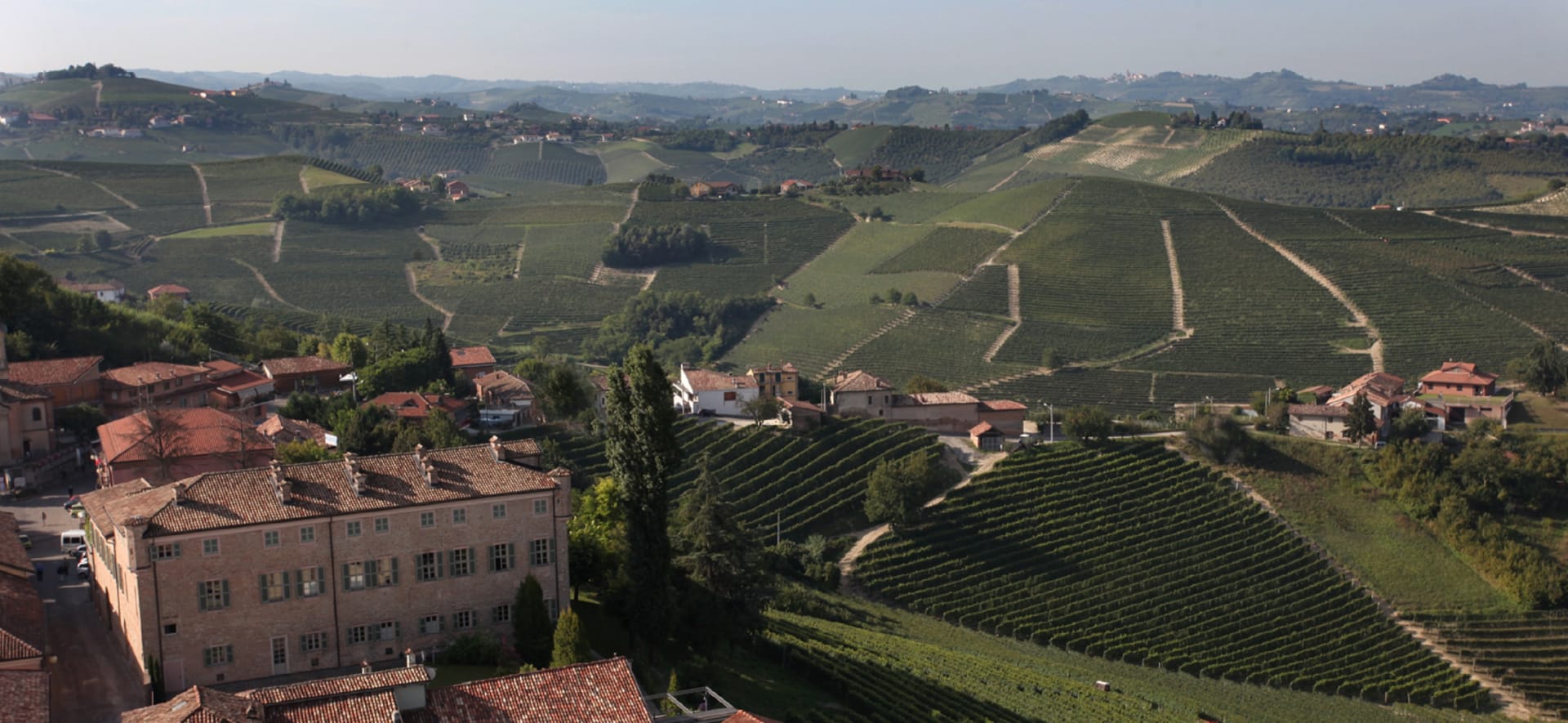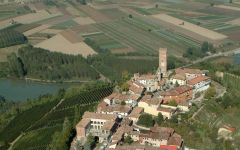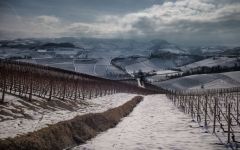Gaja Sperss Barolo 2013
-
Jeb
Dunnuck -
Robert
Parker -
James
Suckling -
Wine
Enthusiast -
Wine
Spectator



Product Details
Your Rating
Somm Note
Winemaker Notes
Professional Ratings
-
Jeb Dunnuck
The gem of the 2013s is the 2013 Barolo Sperss which comes from limestone-dominated soils. The 2013 is deep, concentrated, and structured, with a fabulous sense of minerality in its black cherry, leafy herbs, damp earth, and licorice aromas and flavors. From a late, cool vintage, it has awesome purity of fruit, plenty of tannins, and a huge finish. It’s a brilliant wine any way you look at it. I’d happily drink this elixir today, but it deserves at least 3-4 years and will keep for 25+.
-
Robert Parker's Wine Advocate
This wine shows the quintessential attributes of the Serralunga d'Alba appellation with dark fruit flavors and powerful intensity. The 2013 Barolo Sperss paints a very authentic picture of its unique territory with rich layers of black fruit, wet earth, black truffle, licorice and spice. The wine's tannic structure is firm and lasting. It shows broad shoulders and rich texture overall. This beautiful Barolo boasts a dark color and thick concentration with the aromatic elegance obtained in the 2013 vintage. This important wine is now part of the Barolo DOCG family.
-
James Suckling
Amazing aromas of cherries, oranges and light prunes with hints of wet earth and mushrooms. Very perfumed. It's medium-bodied, firm and direct. Great vino. Needs at least five years to come together but already a joy to taste.
-
Wine Enthusiast
Underbrush, toast, menthol, grilled herb and star anise aromas lead the way. Firmly structured but loaded with finesse, the taut palate delivers Morello cherry, raspberry, licorice and a toasted note while assertive, close-grained tannins provide the framework. It’s still young and austere so give it time to fully develop. Drink 2023–2033. Cellar Selection
-
Wine Spectator
Textbook rose, tar and cherry aromas and flavors, with accents of oak spice, licorice and tobacco, are the hallmarks of this complex red. Powerful, yet harmonious, showing fine structure and a lingering finish. Best from 2022 through 2040.
Other Vintages
2019-
Jeb
Dunnuck -
Wine
Enthusiast - Vinous
-
James
Suckling -
Wine
Spectator
-
Robert
Parker -
James
Suckling -
Wine
Spectator
-
James
Suckling -
Jeb
Dunnuck -
Robert
Parker - Decanter
-
Wine
Spectator
-
Wine &
Spirits -
Wine
Spectator
-
Jeb
Dunnuck -
Wine &
Spirits -
Robert
Parker -
James
Suckling -
Wine
Spectator -
Wine
Enthusiast
-
James
Suckling -
Wine
Enthusiast - Decanter
-
Robert
Parker
-
Robert
Parker -
Wilfred
Wong -
James
Suckling -
Wine
Spectator
-
Wine
Spectator -
Robert
Parker -
Wine
Enthusiast -
James
Suckling
-
Robert
Parker -
Wine
Spectator
-
Robert
Parker -
Wine
Enthusiast -
Wine
Spectator -
James
Suckling - Decanter
-
Robert
Parker -
James
Suckling
-
Wine
Enthusiast -
Robert
Parker -
Wine
Spectator
-
Wine
Spectator -
Robert
Parker
-
Wine
Spectator -
Robert
Parker -
Wine
Enthusiast
-
Wine
Spectator -
Robert
Parker
-
Robert
Parker -
Wine
Enthusiast -
Wine
Spectator
-
Wine
Spectator -
Robert
Parker
-
Robert
Parker -
Wine
Spectator
-
Robert
Parker
- Decanter
-
Robert
Parker
-
Wine
Spectator
-
Robert
Parker








Perched atop a steep hill in the Langhe sits the small village of Barbaresco, home of the GAJA winery. The story of the GAJA Winery can be traced to a singular, founding purpose: to produce original wines with a sense of place which reflect the tradition and culture of those who made it. This philosophy has inspired five generations of impeccable winemaking. It started over 150 years ago when Giovanni Gaja opened a small restaurant in Barbaresco, making wine to complement the food he served. In 1859, he founded the Gaja Winery, producing some of the first wine from Piedmont to be bottled and sold outside the region. Since that time, the winery has been shaped by each generation’s hand, notably that of Clotilde Rey, Angelo Gaja’s grandmother. Her passion for uncompromising quality influenced and informed Angelo Gaja. Through Angelo, these values have become the cornerstone of the GAJA philosophy and are engrained in every aspect of wine production
In 1961, Angelo Gaja began his mission of bringing this great winery to an even higher level. He was the first to use barriques, 225-liter French oak barrels. Under his direction, GAJA pioneered the production of single-vineyard designated wines and was the first to plant Cabernet Sauvignon, Chardonnay and Sauvignon Blanc varietals in Piedmont. He was also instrumental in elevating the native Nebbiolo grape to world-class esteem.
Angelo Gaja is joined by the fifth generation of the GAJA family – his daughters Gaia and Rossana and his son Giovanni. Together they continue to advance the winery’s legacy. To fully realize their vision, all GAJA wines are produced exclusively from grapes grown in estate-owned vineyards, including 250 acres in Piedmont’s Barbaresco and Barolo districts as well as estates in Pieve Santa Restituta (Montalcino) and Ca’Marcanda (Bolgheri). It is from these storied vineyards, and their terroir – the combination of soil, weather and vines that grow upon them, that GAJA wines reveal their true heart and soul.

Responsible for some of the most elegant and age-worthy wines in the world, Nebbiolo, named for the ubiquitous autumnal fog (called nebbia in Italian), is the star variety of northern Italy’s Piedmont region. Grown throughout the area, as well as in the neighboring Valle d’Aosta and Valtellina, it reaches its highest potential in the Piedmontese villages of Barolo, Barbaresco and Roero. Outside of Italy, growers are still very much in the experimentation stage but some success has been achieved in parts of California. Somm Secret—If you’re new to Nebbiolo, start with a charming, wallet-friendly, early-drinking Langhe Nebbiolo or Nebbiolo d'Alba.

The center of the production of the world’s most exclusive and age-worthy red wines made from Nebbiolo, the Barolo wine region includes five core townships: La Morra, Monforte d’Alba, Serralunga d’Alba, Castiglione Falletto and the Barolo village itself, as well as a few outlying villages. The landscape of Barolo, characterized by prominent and castle-topped hills, is full of history and romance centered on the Nebbiolo grape. Its wines, with the signature “tar and roses” aromas, have a deceptively light garnet color but full presence on the palate and plenty of tannins and acidity. In a well-made Barolo wine, one can expect to find complexity and good evolution with notes of, for example, strawberry, cherry, plum, leather, truffle, anise, fresh and dried herbs, tobacco and violets.
There are two predominant soil types here, which distinguish Barolo from the lesser surrounding areas. Compact and fertile Tortonian sandy marls define the vineyards farthest west and at higher elevations. Typically the Barolo wines coming from this side, from La Morra and Barolo, can be approachable relatively early on in their evolution and represent the “feminine” side of Barolo, often closer in style to Barbaresco with elegant perfume and fresh fruit.
On the eastern side of the Barolo wine region, Helvetian soils of compressed sandstone and chalks are less fertile, producing wines with intense body, power and structured tannins. This more “masculine” style comes from Monforte d’Alba and Serralunga d’Alba. The township of Castiglione Falletto covers a spine with both soil types.
The best Barolo wines need 10-15 years before they are ready to drink, and can further age for several decades.
